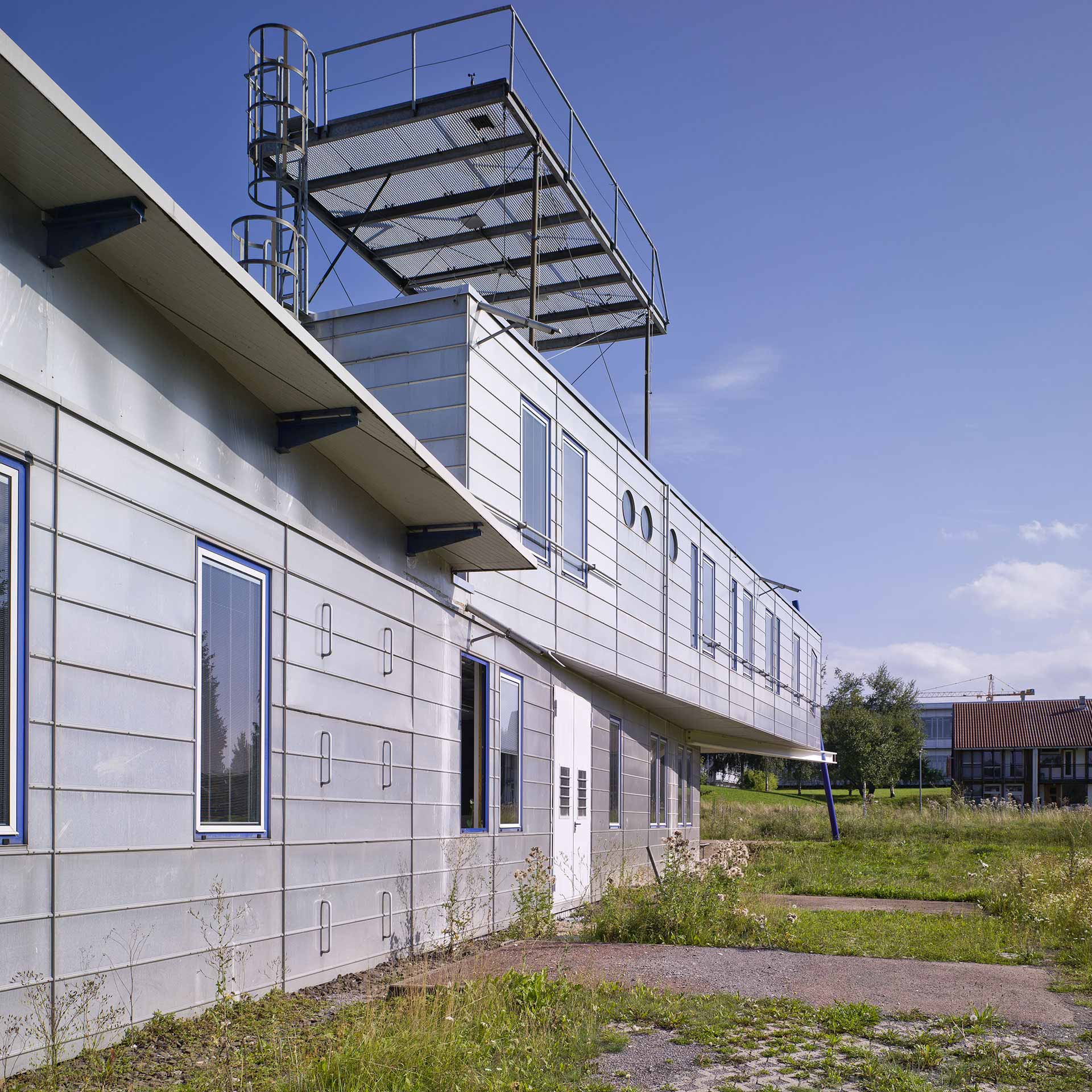














Hysolar
Stuttgart, Germany
Hysolar
Stuttgart, Germany
Considered an important example of deconstructivist architecture, the Hysolar Research Institute building was realized in 1987, at the University of Stuttgart campus in Stuttgart-Vaihingen. The project was completed under the leadership of Professor Günter Behnisch, who, at that time, directed the practice Behnisch & Partner together with Partners, Winfried Büxel, Manfred Sabatke and Erhard Tränkner. The building originally accommodated two institutes – one for solar cell research, the other for the development of cost-effective methods of separating the elements of water.
The project had to be completed on a tight schedule and budget, so there were advantages in partly using factory-made containers for the laboratory rooms. For Behnisch & Partner this was a good opportunity to explore ways of using prefabricated elements in an unorthodox manner, a collage of elements which seemed to float in a free, spatial equilibrium. The most extravagant formal gesture is a red steel tube which bursts from the ground north of the building and traverses the hall and projects through the glazed south end. Research institutes are often quite boring, repressing everything special about their function within an orthagonal, standard, grid-like plan inside a box. This space, on the other hand, is memorable, conveying the excitement of the trailblazing innovative work that takes place within.
Unfortunately, the Hysolar building stood empty for many years after the original tenants, for whom the building had been designed, vacated the property. In 2006, the University of Stuttgart decided to commission Günter Behnisch again with a study in order to find out how the building could be restored, renovated and extended to accommodate the newly established Institute for Visualisation & Interactive Systems (VISUS). The project would be completed by Behnisch & Partner, with assistance by collaborating firm, Harder III Stumpfl, a practice formed by former employees of Behnisch & Partner.
Sometime after the completion of the study, the planning process for the renovation and addition to the building was carried out jointly between Behnisch Architekten and Harder III Stumpfl. Harder III Stumpfl were commissioned with the planning of the extension to the building, while Stefan Behnisch (Behnisch Architekten) was commissioned with the restoration and modernisation of the original Hysolar building.
Under the architectural leadership of Stefan Behnisch, the building was restored in collaboration with Harder III Stumpfl in such a manner that its characteristic appearance and its typical features remained exactly as they were, while the building systems were updated to meet today’s advanced technical standards. Both the technical equipment and the building envelope were completely renewed to meet the requirements of future generations of scientists. These upgrades were carried out in such a manner that they are virtually imperceptible and do not adversely affect the unique character of the building. In addition, the photovoltaic plant, which had been removed in the past, was also re-installed. It now contributes to the building’s energy supply.